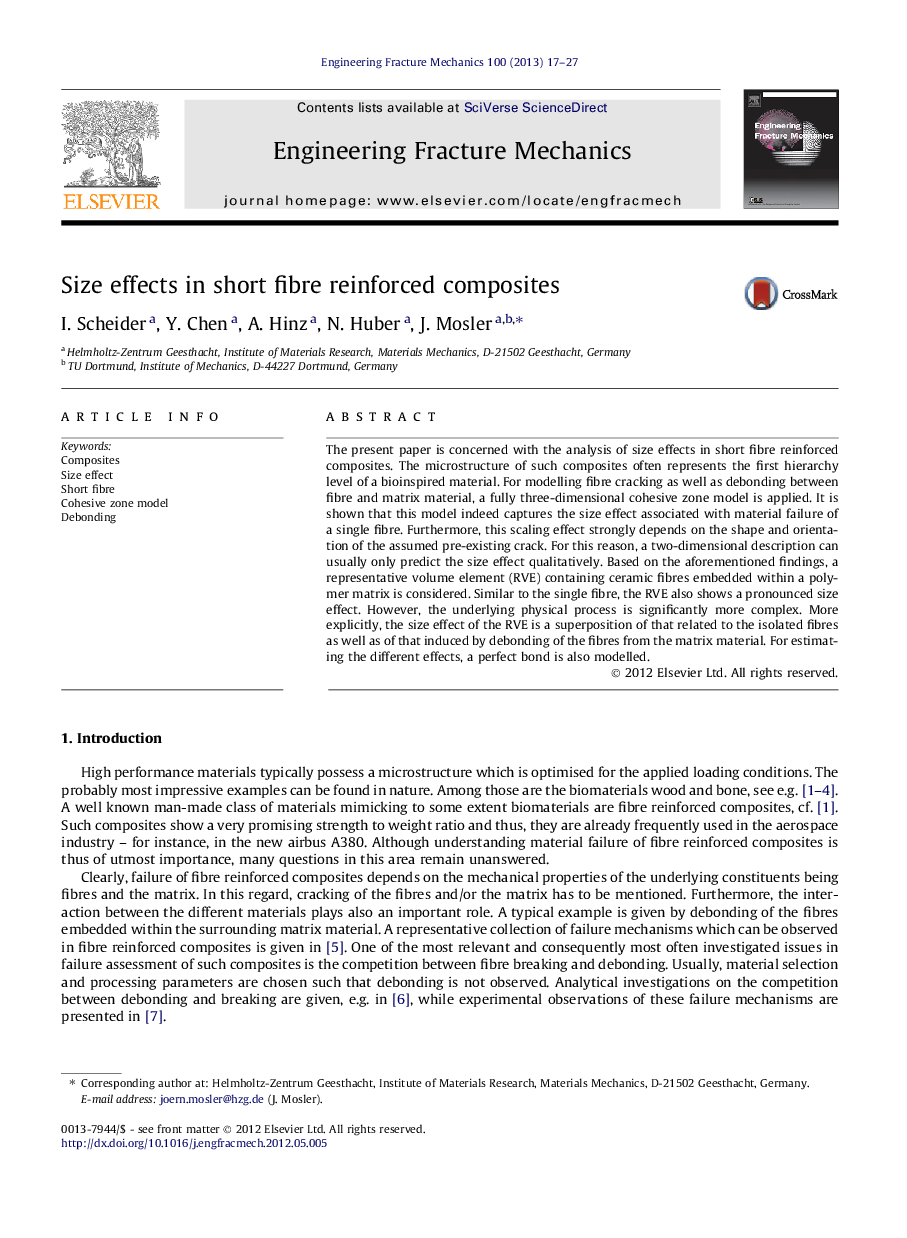| کد مقاله | کد نشریه | سال انتشار | مقاله انگلیسی | نسخه تمام متن |
|---|---|---|---|---|
| 767197 | 1463125 | 2013 | 11 صفحه PDF | دانلود رایگان |

The present paper is concerned with the analysis of size effects in short fibre reinforced composites. The microstructure of such composites often represents the first hierarchy level of a bioinspired material. For modelling fibre cracking as well as debonding between fibre and matrix material, a fully three-dimensional cohesive zone model is applied. It is shown that this model indeed captures the size effect associated with material failure of a single fibre. Furthermore, this scaling effect strongly depends on the shape and orientation of the assumed pre-existing crack. For this reason, a two-dimensional description can usually only predict the size effect qualitatively. Based on the aforementioned findings, a representative volume element (RVE) containing ceramic fibres embedded within a polymer matrix is considered. Similar to the single fibre, the RVE also shows a pronounced size effect. However, the underlying physical process is significantly more complex. More explicitly, the size effect of the RVE is a superposition of that related to the isolated fibres as well as of that induced by debonding of the fibres from the matrix material. For estimating the different effects, a perfect bond is also modelled.
► Size effects of failure in a fibre reinforced composites is investigated.
► 3D finite element analyses of RVEs including cohesive zone model.
► Size effect depends strongly on the type of pre-existing cracks.
► Final failure mode is a superposition between fibre cracking and debonding.
► The composite shows the behaviour “the smaller the stronger”.
Journal: Engineering Fracture Mechanics - Volume 100, March 2013, Pages 17–27